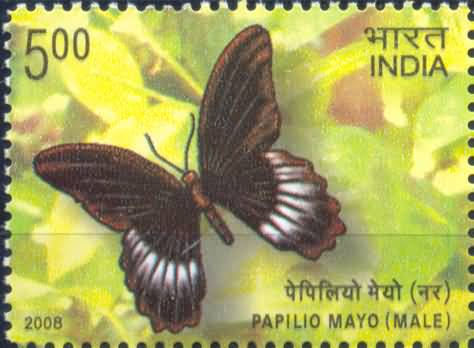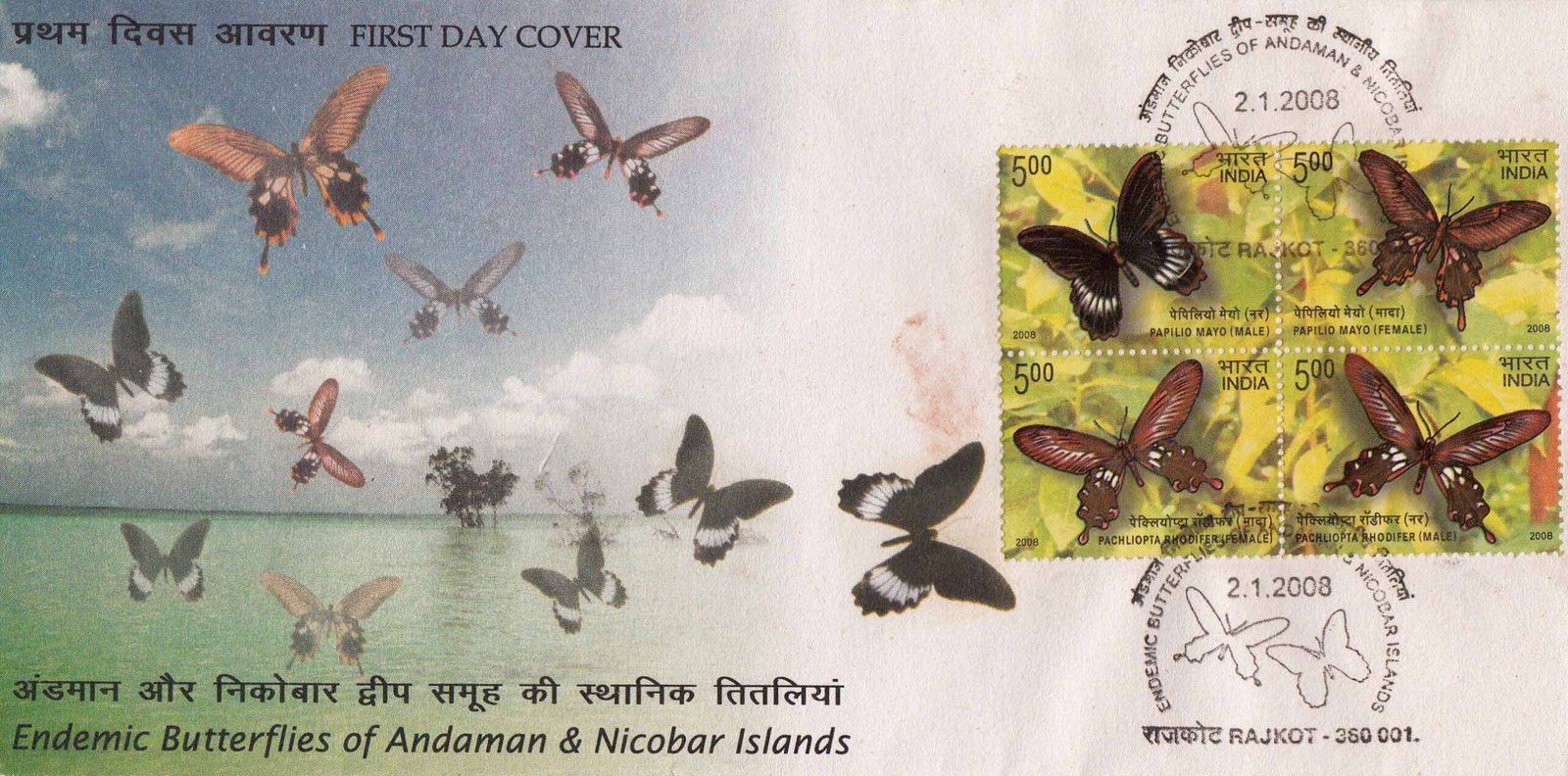Endemic Butterflies of Andaman & Nicobar Islands – Andaman Mormon (Male)

Technical Data
| Stamp Set | Endemic Butterflies of Andaman & Nicobar Islands |
|---|---|
| Date of Issue | January 2, 2008 |
| Denomination | Rs. 5 |
| Quantity | 3,000,000 |
| Perforation | 13 |
| Printer | India Security Press, Nasik |
| Printing Process | Photo Gravure |
| Watermark | No Watermark |
| Colors | Multicolor |
| Credit (Designed By) | Mr. Suresh Kumar Smt. Alka Sharma |
| Catalog Codes |
Michel IN 2257 Stamp Number IN 2230a Yvert et Tellier IN 2022 Stanley Gibbons IN 2459 WADP Numbering System - WNS IN001.2008 |
| Themes | Animals (Fauna) | Butterflies and Moths | Insects |
The Andaman and Nicobar Islands are blessed with rich butterfly fauna due to presence of humid tropical rainforest. The long isolation of these islands and their relatively undisturbed ecology provides scope for the evolution of many endemic varieties. The butterfly fauna of the Andaman and Nicobar Islands has a high degree of endemism, they are very unique.
Some of the endemic butterflies are: Andaman Mormon, Andaman Club Tail, Andaman Oak Leaf, Tailless Oak Blue and Andaman Snow Flat; Nicobar Yeoman and Nicobar Map. These butterflies are very specific to their food plants. The butterflies have been provided protection by the Government of India under the Wildlife (Protection) Act, 1972 and a few butterflies of Andaman and Nicobar islands are listed in Schedule I, II and III and in the Red Data book of International Union for the Conservation (IUCN). There is urgent need to draw the national attention on conservation and protection of endemic butterflies of these islands. This set of stamps portrays two endemic butterflies, Andaman Mormon (Papilio mayo) and Andaman Club Tail (Pachliopta rhodifer).
Andaman Mormon (Papilio mayo)
Andaman Mormon was the first endemic butterfly described from Andaman Islands. The wing expanse of male is 120 mm while that of female is 150 mm. The body is black in both sexes. Male has black upper side; forewing without interneural streak, hind wing without tail, antediscal broad blue band, underside black; fore wing with basal red streak and obscure interneural veins; hind wing with red patch, a complete red ocellus, submarginal blue lunular spots posterior ones less prominent. The female has fore wing with broad interneural streaks; white in the discal area. Hind wing is interrupted by an oval black spot and by a broad elongated black patch, apical half of tail is red whitish at apex. Its food plant is citrus plant of climbing vine. This endemic species is not rare in Andamans but females are very difficult to sight. This is a forest species which inhabits North to South Andamans. It resembles Great Mormon and is also mimic to Andaman Clubtail.
Andaman Club Tail (Pachliopta rhodifer)
Wing expanse of male 120 mm while that of female is 140 mm. The body of the male is red upper side black; forewing has pale streaks extending up to apex of cell; hind wing are more crimson red; hind wing upper side dusted with black scales, discal more extensive; antediscal spot extends well below vein. The female is mimic to female of Andaman Mormon and flies slowly together in forest paths. This endemic species used to be very common in 80’s in South Andamans but now a days it is rarely sighted. Its food plant is Thotia tomentosa.
First Day Cover

